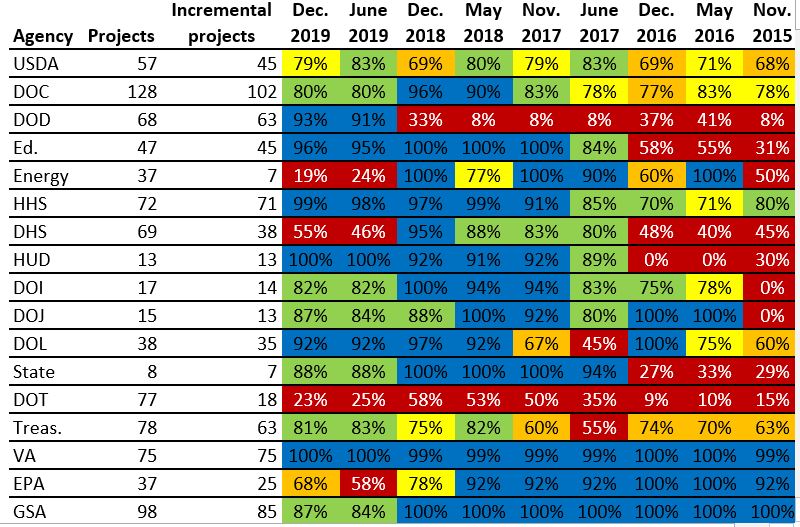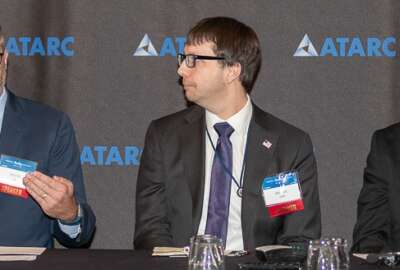
Agilefall: The place between agile and waterfall development where most agencies live
The Education Department, SBA and GSA are releasing new software capabilities every two weeks to help modernize major programs.
Here’s a new term for you to learn: Agilefall.
It’s the place where many agencies live as they take on digital transformation. You see, Agilefall is that station between agile software development and waterfall development.

“We see far more examples of agencies where they are trying to straddle both worlds and haven’t made the leap to full on agile,” said Chris Cairns, a partner at Skylight Digital, former Presidential Innovation Fellow and co-founder of the 18F digital services group at the General Services Administration. “When you see solicitations are still very schedule- and cost-driven with 5% or 10% variance requirements, configuration management plans and all those things that scream of IT development lifecycles, then you know the agency hasn’t made the move to agile.”
Agilefall is probably a more exact term than what gets thrown around across the government where programs and projects say they are deep into the agile methodology or using dev/sec/ops, but are really stuck in some ways in the old methodology that has shown time and again it doesn’t work for IT projects.
“When you talk about digital transformation, you have to change the way you think and work. You need to work with people and companies that represent those ideas. I think industry is adjusting too,” Cairns said. “I’ve become a big believer that metrics are more important than ever. Companies who are high performing deploy frequently, ship code all the time and have a low change error rate. They have good automated testing, and their user satisfaction is really high because they are developing capabilities that users want and need.”
It’s difficult to get a real sense of just how much agilefall is happening across government. The only recent data comes from the December 2019 Federal IT Acquisition Reform Act (FITARA), which grades agencies on their use of agile or dev/sec/ops or incremental development. The Federal IT Dashboard used to provide this information, but it’s been a year or more since the Office of Management and Budget took it down.
The FITARA 9.0 scorecard gave 10 agencies an “A” grade, while three received “F” grades in what it calls incremental development.

But Cairns said even the FITARA grades don’t necessarily show agencies have fully moved to agile development because to earn a high grade agencies just have to show they planned to deliver functionality every six months and use an iterative development methodology.
“Doing agile is different than being agile and embodying the principles of agile development,” he said. “That’s why it’s hard to say what is the adoption rate across government. We see a lot of usage of agile in the language in solicitations, but if you read them closely, you can pick up whether they truly get it or not. They may say we do agile, but you have to maintain a year-long Microsoft project schedule. That is agilefall.”
Cairns and other experts are quick to point out that even agilefall or delivering capabilities every six months is better than the waterfall method that proved broken time and again over the last two decades.
Spending on agile over $4 billion
And agencies are spending money to continue to transform their development approaches. Bloomberg Government reported in December that agencies spent $4.4 billion to develop new or to customize software applications in fiscal 2018, which was a 7% increase over 2017.
The good news is the pandemic emergency is providing agencies the ability to demonstrate that agile isn’t just a new coat of paint on top of their waterfall processes.
Take the Education Department’s Impact Aid Grant System (IAGS), which provides grants to school systems if they can’t raise funds another way such as through property taxes.
Jason Taliaferro, the project manager, said over the last three years the project has moved toward modernization by putting applications in the cloud and implementing agile development.
“Our sprints are typically two-week cycles, which is how long it takes for us to take new development from creating a ticket to production. Sometimes it’s quicker if it’s just a bug fix or something similar,” Taliaferro said during a recent AFCEA Bethesda webinar. “Using agile has allowed us to respond quicker to needs. It’s been huge for us. It used to take months to make changes.”
Taliaferro added IAGS is using a low-code platform to expedite the changes and address customer needs in near real-time.
The General Services Administration and the Small Business Administration also are experiencing similar success with the move to agile
Judith Zawatsky, the assistant commissioner of the Office of Systems Management in GSA’s Federal Acquisition Service, said they have 12 agile teams developing new and upgrading acquisition systems.
“We have been able to move from 10-week cycles to 2-week cycles,” she said. “Those deployments are not necessarily what the user sees. A lot of them are on the back end. We are trying to build a viable user experience that can put in alpha testing before roll out to large group.”
5 days to roll out loan application
For SBA, the pandemic emergency and the hundreds of billions of dollars it received under the stimulus bills showed how it’s benefiting from agile.
Guy Cavallo, the deputy chief information officer at SBA, said the agency created a new loan processing application in the cloud for the Paycheck Protection Program and the Economic Injury Disaster Loan (EIDL) programs in five days.
“Normally we have a two-week sprint, but we didn’t have that luxury this time,” he said. “We built the application in the cloud and that also allowed our security team to work with our development team. We want to make sure security is always involved from day one. Because we are in the cloud and are able to leverage cyber tools, we are able to shorten that development cycle. Instead of humans looking at monitors, we have cloud artificial intelligence and machine learning tools looking at how the code is being used and developed.”
Like the Education Department, SBA also has been on a three-year modernization journey that set the stage for developing a new application in five days.
Read more: Technology News
Cavallo said the pandemic emergency also helped SBA accelerate the wider implementation of a new customer service data hub.
“The agency had been very siloed so two years ago we laid out a roadmap to break apart those siloes. We saw a lot of commonality across programs so we started to move smaller offices into this central data program,” he said. “When the pandemic hit, we accelerated that effort. The office of disaster assistance was getting a lot of emails, over 1 million and there was no way to manage it. In about a week, we moved them into our customer service case management system that uses automatic routing. So now managers can see the backlog and reassign staff. We hoped we’d be here in two years, but we are here now. We had laid the groundwork that allowed us to move quickly and the disaster situation forced us to come up with solution. We now can have smaller offices jump on more easily because we have the bigger offices on the platform.”
Skylight’s Cairns said the examples from the SBA, GSA and the Education Department as well as many others show how it’s as much about the process as it’s about the leadership and mindset.
“With the COVID-19 emergency, I think the government has seen the benefit of working in an agile way. Now it’s about how to make it the standard and not the exception,” he said.
That seems to be a common refrain across the federal market, see the change, be the change and live the change that rose from the tragedy of the pandemic.
Copyright © 2024 Federal News Network. All rights reserved. This website is not intended for users located within the European Economic Area.
Jason Miller is executive editor of Federal News Network and directs news coverage on the people, policy and programs of the federal government.
Follow @jmillerWFED





